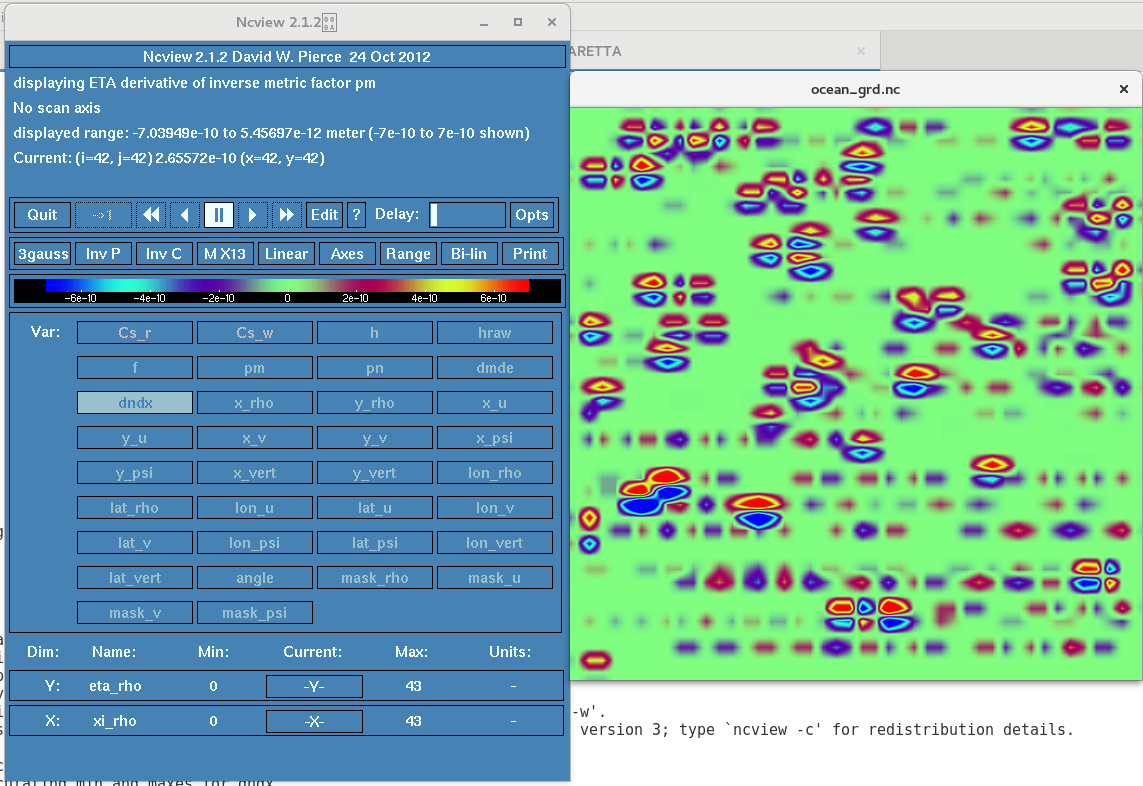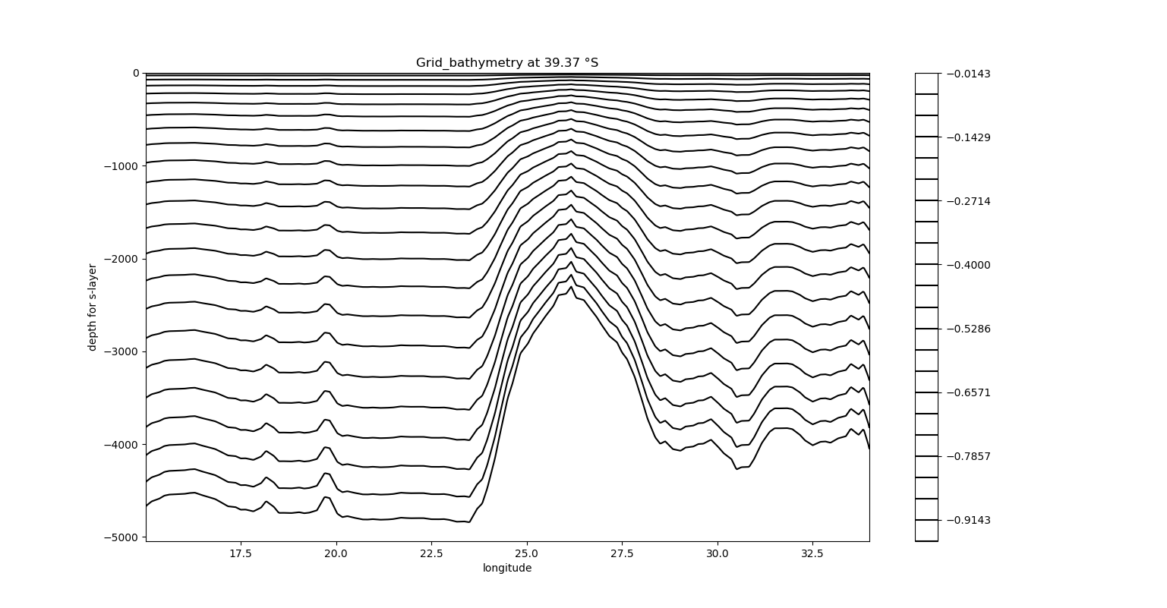I'm trying to model the ocean dynamics in a “small” domain along the coast of West South Africa in the Benguela Current. I chose it a bit randomly as a first test domain as I want to study other domains afterwards. At the fist time step (t=1), ROMS blows up while indicating that :
Code: Select all
Found Error: 01 Line: 298 Source: ROMS/Nonlinear/main3d.F
Found Error: 01 Line: 298 Source: ROMS/Drivers/nl_ocean.h
Blowing-up: Saving latest model state into RESTART file
Code: Select all
TIME-STEP YYYY-MM-DD hh:mm:ss.ss KINETIC_ENRG POTEN_ENRG TOTAL_ENRG NET_VOLUME
C => (i,j,k) Cu Cv Cw Max Speed
0 2018-01-01 12:00:00.00 3.072290E-03 2.027491E+04 2.027491E+04 2.728826E+15
(36,07,70) 2.846040E-02 1.058142E-02 0.000000E+00 5.856957E-01
DEF_HIS - creating history file, Grid 01: ocean_his.nc
WRT_HIS - wrote history fields (Index=1,1) in record = 0000001
1 2018-01-01 12:15:00.00 NaN NaN NaN NaN
(00,00,00) 0.000000E+00 0.000000E+00 0.000000E+00 0.000000E+00
Then, I thought about the Courant Number.
Code: Select all
Metrics information for Grid 01:
===============================
Minimum X-grid spacing, DXmin = 1.56642103E+01 km
Maximum X-grid spacing, DXmax = 1.68372871E+01 km
Minimum Y-grid spacing, DYmin = 2.42245568E+01 km
Maximum Y-grid spacing, DYmax = 2.60174165E+01 km
Minimum Z-grid spacing, DZmin = 1.36165981E-01 m
Maximum Z-grid spacing, DZmax = 1.14109522E+02 m
Minimum barotropic Courant Number = 2.10206234E-02
Maximum barotropic Courant Number = 5.07703716E-01
Maximum Coriolis Courant Number = 6.13830395E-02
As my maximum Z-grid spacing was around several hundreds of meters and that I've only seen examples where this value was lower, I've tested to run ROMS with a more bottomward accurated grid (modifying thetab). But that did not solve my problem neither.
Finally, ROMS wrote that the roughness of my grid was higher than those I've seen in examples.
Code: Select all
Maximum grid stiffness ratios: rx0 = 9.925375E-01 (Beckmann and Haidvogel)
rx1 = 1.301136E+02 (Haney)

Secondly, while the dmde -not showed- (which stands for "XI derivative of inverse metric factor pn") changes smoothly, the dndx (which stands for 'ETA derivative of inverse metric factor pm') shows some abrupt modifications.

I am now wondering if my problem could come from my bathymetry and eventually if you add some clues for me to seek better (or eventually, I could choose a more simple domain -a little southward- for a first test) or if I am looking hard in a totally bad direction…
I've read a lot of posts about similar problems, but that did not solved mine. I hope you could give me some clues...
Thanks a lot!
